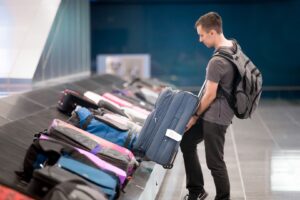Why horse-riding in Patagonia is the ultimate adventure holiday
2 min readIt’s the mountains I long for. Everything is clean: the water, the air, the snow, the rain – even the dust. Nothing is poisonous. Almost everything is edible. If I was the last man standing on the planet and you had to drop me somewhere, I could survive in the Patagonian Andes. The peaks are like a womb in a hostile place where I can be nourished. Around dusk, the sky turns orange with these soaring, lenticulated clouds – I haven’t seen anything like that anywhere in the world.
A horse opens up the region like nothing else. There’s only one major road – the National Route 40 – that runs north to south across Argentina, with tracks leading off to farms and homesteads. Many areas are unreachable unless you walk or ride. I’m not that keen on hiking; it’s far more convenient to travel mounted as you can pack supplies for a week or two and be completely independent.
South American textiles inside the estanciaAnne Dokter
As a young man, I used to hang out with gauchos, herding, branding, lassoing and castrating cattle, and I learned to break horses in their rough-and-ready cowboy style. Patagonia is full of semi-wild breeds; we round them up and choose the best ones to break; some haven’t been anywhere near humans by the age of three. These animals are central to the traditional way of life in the south. It’s surprising how deep into the valleys the gauchos will take their cows or sheep to find grazing – you can’t do the work using a quad bike or chopper. All along the Andes, humans depend on horses.
Crossing the Andes on horseback is a mythic rite of passage because of its position in Argentina’s history. José de San Martín, the man who liberated much of South America, rode across the mountain range with thousands of soldiers in 1817. At the time such a military operation was considered impossible, but they did it and freed Chile from the Spanish, securing independence. One of my favourite books is Across Patagonia by Lady Florence Dixie, who travelled from the Atlantic to the Pacific by horse in the 1870s, eating llama-like guanaco and not much else. It was a no-man’s – or no-woman’s – land then and she was a true trailblazer.




